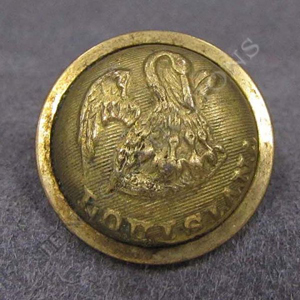
Consider Joe Barnett, a 55-year-old Clinton resident who had walked across his backyard “hundreds of times” before finding a .58 caliber Civil War-era bullet barely below the ground’s surface.
Welcome to the world of metal detecting, which is a lot like fishing and hunting. One never knows what will be found on a particular day, but the search is often as thrilling as the find.Well, almost.
“Finding something that hasn’t been touched for 150 years is really fascinating to me,” said James Fox, 52, of Ridgeland. “I’ve been collecting Civil War memorabilia since I was a kid. And I like to find stuff that a lot of people don’t think much about – a knife handle that somebody had scratched their initials in, a straight razor with a guy’s name and regiment on it.
“This stuff hasn’t seen the light of day since the last time the owners touched it. And I’ve found arrowheads that haven’t been touched for 1,000 years. Pretty neat.”
“Metal detecting is a fast-growing hobby worldwide. It has proven to be a valuable tool in criminal cases. Barnett, a logistics coordinator with Entergy, found the gun believed to have been used in the August shooting death of Jackson police officer Glen Agee in chest-high water in a rural Hinds County drainage ditch.
“There were other guys out there looking, too,” said Barnett, who worked with the Greenville Police Department in the late 1970s and early ’80s. “I just happened to be the one who walked over it.”
Barnett was equipped with a detector that can be used underwater, which is popular among many metal hunters.
Victor McGriff, 71, of Bovina has been metal detecting since 1965.
Around 1970, he stopped at a lake that had been drained.
“I found rings, some coins, a pocket knife,” he said. “I got to thinking, ‘There has to be a lot of stuff under the water. That’s where I need to go looking.'”
He took a scuba diving course in 1971, and since then ponds and lakes have been his favorite hunting areas. He stays in areas that are no more than 15 feet deep, and his wife, Mary, usually sits on the bank while he’s searching.
“I go where they have swimming areas,” he said, “and I’ve found just about anything you can think of – rings, watches, knives, guns.”
At a lake near Morton, McGriff found a Timex watch buried just beneath some sand.
“The cloth band on it had deteriorated, but when I got it out and wound it up, it started working again,” he said, laughing. “I guess what they say is true – Timex watches really can take a lickin’ and keep on tickin’.”
Dan Patterson, 47, of Madison, bought his first metal detector in 1984. “Looking at relics in local museums and running into several old diggers sparked my interest,” he said.
Now, he has his own collection of “finds” that have been displayed in 35 magazines, including an Andrew Jackson button and two Confederate officer buttons, a Union officer stencil and a Bowie knife.
He’s also used his detector for those in need.
“Several years ago, a family from Carey had their house burn down. All their keepsakes from many years of marriage were in the house. I went through the rubble and ash and debris and found a box full of special family keepsakes. It’s all they have left from their marriage. It’s always good to help out.”
Metal detectors range from $150 to more than $2,000 and weigh between 2 and 5 pounds. Many models give the hunter an idea of what he or she has run across.
“It will give you a sound and a display,” Barnett said. “If you go over a nail, it’ll make a chatter sound. Solid pieces of metal give off a deep solid sound. Aluminum objects, such as a Coke can, give off a sharp, high tone. After you use them a while, you’re able to tell when it’s time to ignore it and when it’s time to stop and dig.”
One of the toughest obstacles is finding good land that hasn’t been gone over several times by previous hunters.
“Private land is the best,” Barnett said, “but it’s hard walking up to somebody you don’t know and getting permission. Two, maybe three, out of 10 will say yes.”
Metal detecting is a hobby for the curious, but don’t expect to get rich.
“If you get into it to find a stash of gold and make a lot of money, you’re going to be disappointed,” Fox said. “But if you enjoy something to get you out of the house and away from everything and are satisfied with finding some interesting things, then it can be a lot of fun.”
___
Information from: The Clarion-Ledger, http://www.clarionledger.com
Copyright 2010 Associated Press. All rights reserved. This material may not be published, broadcast, rewritten, or redistributed.
AP-CS-11-19-10 0400EST


